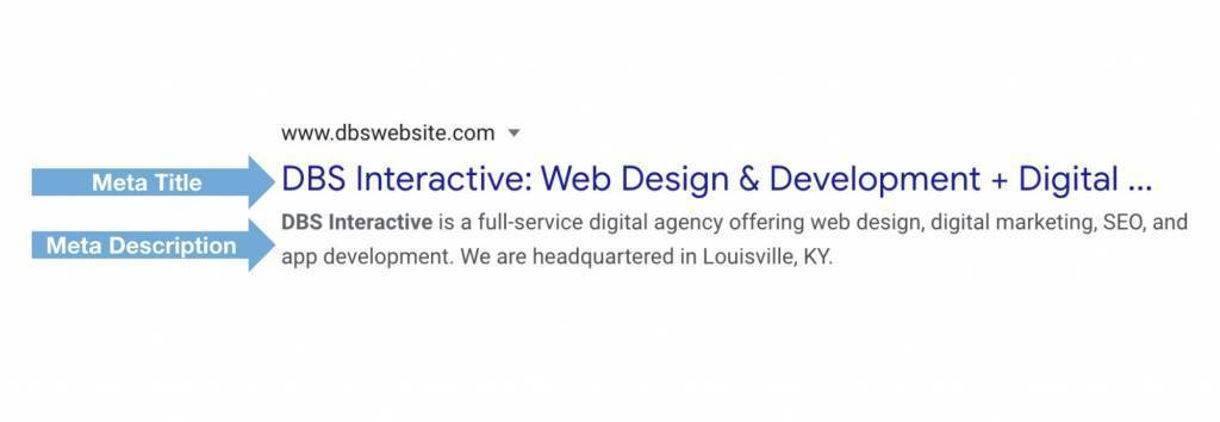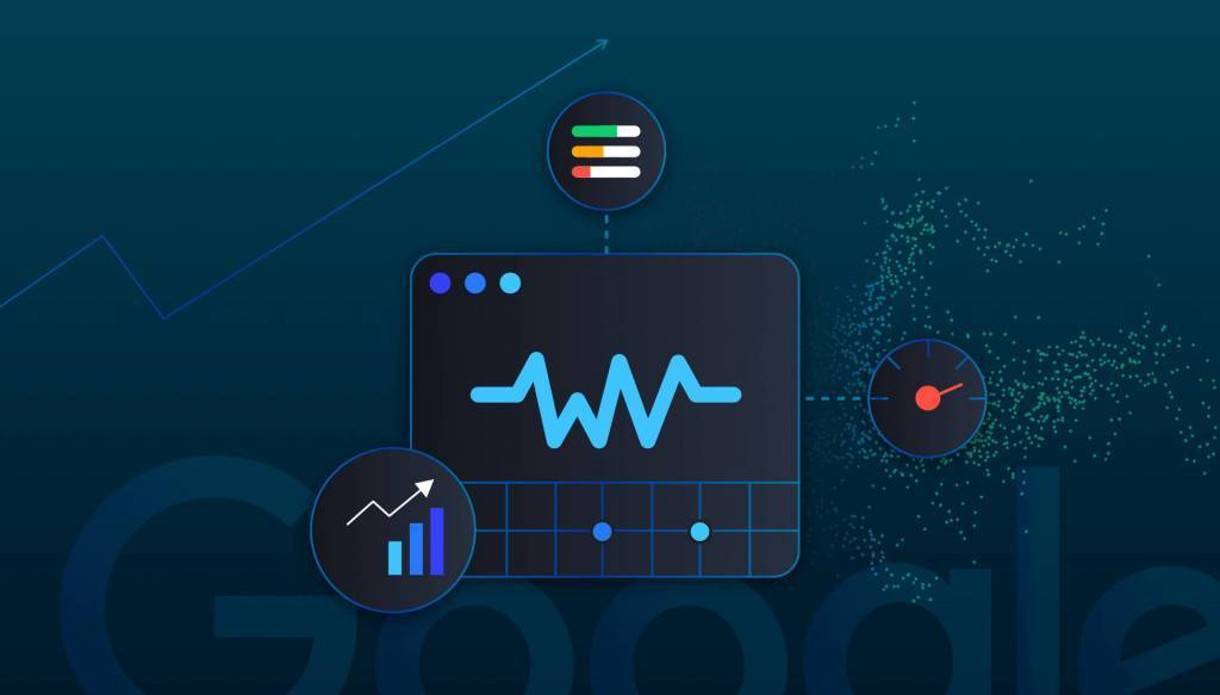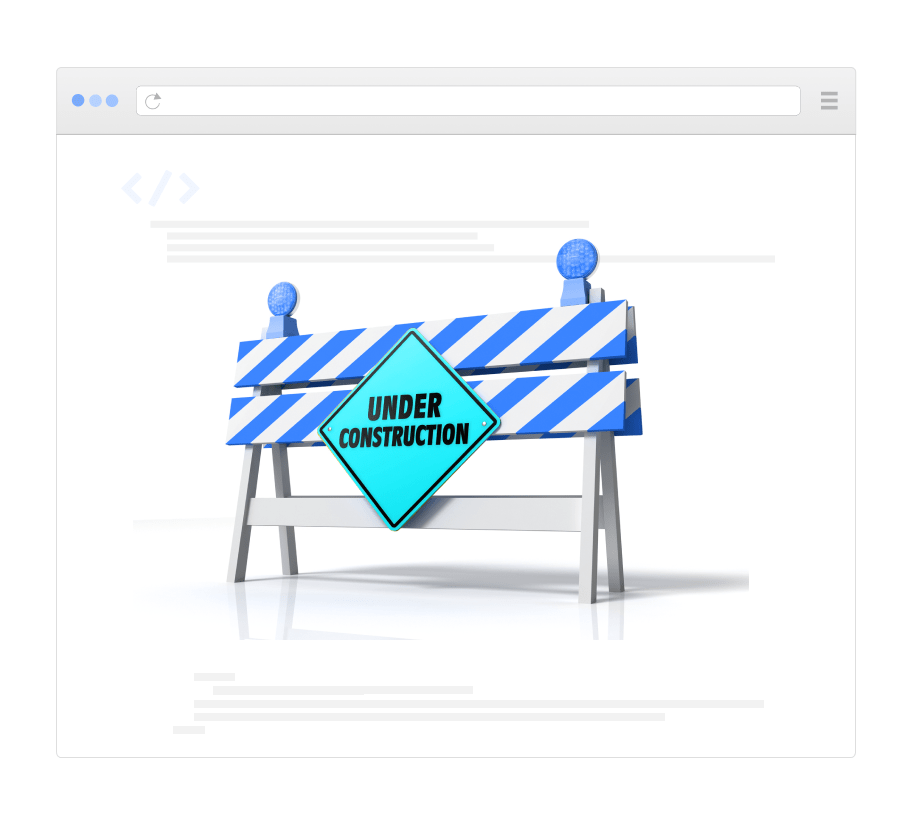

SEO Best Practices: Important Strategies for Optimizing Websites
Search engine optimization (SEO) that sends the right signals to search engines will drive considerably more organic traffic to your website, which is vital to the success of your organization's digital strategy. As organic search usage continues to outpace growth in all other marketing channels, optimizing your webpages for improved search performance will remain pivotal to achieving the goal of ranking on the first page of Google search results.
Failing to produce, publish, and continuously refine your website content according to best practices for SEO risks allowing your online presence to shrink and become insignificant.
But there's good news. Here we have gathered the most important SEO strategies and search optimization techniques that, when executed properly, will elevate high-quality web content to the top of search engine results pages (SERPs) for the keywords you are targeting. Let's dive in!
Table of Contents
Click to jump to any section below:
Start with Your On-Page Strategy

Whether you are refreshing an old piece of web content, or writing new content, it helps to focus first on your approach to optimizing the internal components that influence search performance. Since you have more control over internal factors than you do over the numerous external factors that affect SEO (like Google's search algorithms), you can complete these tasks sooner and with more efficiency. This is often called "On-Page SEO" because all the optimization takes place on your website. It's an extremely important phase of your SEO strategy because it lays the foundation for your content's search performance moving forward.
Comprehensive Research
Research is fundamental to the SEO success of your content, and must occur before an effective SEO strategy can be fleshed out and implemented through optimized content.
Audience Research
Start by identifying your primary buyer personas that will be served by the content. For example, if you were targeting audiences within the B2B ecosystem, your strategy may include role-based personas such as Marketing Directors, CMOs, CEOs, Brand Managers, and Sales Directors, because they are often the decision-makers and solution-seekers within B2B organizations.
Competitive Research
To succeed in crowded markets and industries, search marketers must understand how competitors are optimizing their own websites for search. That includes evaluating a competitor site's performance scores (more on that below) and ascertaining the keywords their web pages are using and winning in search.
Once a bucket of relevant keywords have been identified, marketers can leverage the search analytics of the best keywords to plan content that will have the best chance of outranking the competition in search results.
SERP Research
Google search results typically contain two types of content – organic results and paid results – but the number and ratio of organic to paid results will vary among keywords. Understanding the composition of the SERPs for these keywords is key to identifying the queries with the most opportunity for your site to appear prominently within the SERP and attract clicks, rather than be obscured by paid results.
Some methods of optimizing web content and websites to rank more highly in organic search results include:
- Observing position changes of content published by high-ranking domains
- Observing which search keywords produce rich text and featured snippets
- Observing which keywords have lots of ads, as this may indicate less organic search opportunity for those keywords, depending on the number and placement of ads that push organic results "below the fold"
Keyword Research
Researching keywords should include not only the keywords relevant to your topic, but also the competitive landscape of those keywords in search. Your site content should use keywords strategically, and avoid overstuffing keywords in certain areas because Google has become much smarter at detecting and ignoring that. Apart from observing which keywords competitor websites are winning in the SERPs, you can use free or premium keyword research tools to identify:
- High-volume keywords that are popular and used by a large number of searchers, indicating the potential for large amounts of inbound search traffic. (Example: "digital marketing")
- Long-tail keywords and query phrases that may have lower search volume, but are more likely used by searchers when they're closer to a point-of-purchase. (Example: “digital marketing agency services for B2B companies”)
- Rich result keywords are proven to generate "Featured Snippets" and other rich media results that stand out from traditional organic listings in the SERPs.
Content Production

Content production is the process of developing and creating visual or written assets such as landing pages, blog posts, white papers, infographics, or videos and eBooks. The term might be useful in a broad sense, but the reality is that the details of content production vary wildly depending on the type of content. The goal is to produce content that ranks, preferably on page one, and drive people to visit your website.
Differentiate Landing Pages vs. Blogs
Generally speaking, all website pages can be boiled down to one of two types: landing pages and blogs. Here's the difference:
- Landing pages are designed to convert by being short, concise and compelling. They are designed to support a user’s journey, whether it's after they click on a link on your website’s home page, or they click through from a link in your social media post or email, or through a digital ad. A landing page typically focuses on one purpose through highly-specific messaging: Leading site visitors to high-value conversion points where they can generate sales or leads.
- Blogs are designed to attract inbound traffic from search engines through finely-crafted, high-quality content. They include posts that are often written to inform and educate readers, establish and amplify branding, and generally go deeper on topics in order to serve as a useful online resource for web users. Blog posts are typically long, informative, and robust, which helps their SEO—though the ideal length of the highest performing blog posts will vary based on the subject matter and adherence to SEO best practices, rather than some minimum or maximum number of words.
Align Your Content with Search Intent
It is important to always keep the search intent in mind while creating content for your website. Search intent—also called "user intent"—is the purpose behind every search query. Using your persona identified on background research, you will be able to understand their search intent.
Pages that rank on the first page of Google have all passed Google's litmus test on search intent. Google search engine’s ultimate priority is to understand and satisfy the search intent of users by showing different search results for specific searches versus more general queries. That means ranking for a page of Google search results requires understanding what your audience actually wants and needs when they search for the keywords you’re targeting.
There are four common types of search intent:
- Informational intent when the user is looking for specific information. It can be a simple search like "what's the day today?" that provides instant results; informational searches can also be something complex like "best digital strategies" that requires a more in-depth choice.
- Navigational intent is evident when the searcher is seeking a specific platform, website, or application. Common examples of navigational searches include "Instagram login," "Amazon," or "YouTube."
- Commercial intent behind a search is commercial when the user is looking for a specific product but hasn't made the final decision yet. Their hope is likely to research the product or brand before making a purchase decision. For example, searches such as "best red shoes" or "high end android phones" are commercial searches.
- Transactional intent is a clear indication the searcher has already made a decision to purchase a specific product or tool. Examples include search queries such as "buy Nike Shoes", "purchase Samsung phone", or "buy cotton sweaters online".
Write Compelling Title Tags and Meta Descriptions
Title tags are clickable headlines that appear in search results and are extremely critical from an SEO perspective. A meta description is a brief summary of a page in SERPs (Search engine results pages) displayed below the page’s title tag.
Compelling Titles are critical to giving users a quick insight into the content of a result and why it’s relevant to their query. It's often the primary piece of information used to decide which result to click on, so it's important to use high-quality titles on your web pages. Search engines like Google typically display the first 50-60 characters of a title. Google will display the full title to your page as long as you keep your title tag under 60 characters.
Meta tags are snippets of text that describe a page’s content; the meta tags don’t appear on the page itself, but are rather set in the page’s source code. They are essentially little content descriptors that help tell search engines (and people searching) what a web page is about.

This is how our meta title and description show up in Google
Here are some other best practices to keep in mind while writing title tags and meta descriptions:
- Include your target keywords
- Write a title that matches content and search intent
- Avoid creating duplicate title tags
- Avoid keyword stuffing
- Keep it descriptive but concise
Optimize Your Images

Content should always have good supporting visuals through high-quality images to create the best UX (User Experience). Beyond visual appeal, properly optimized images also contribute to your site's overall SEO, helping to increase your inbound organic traffic, especially through Image Searches.
Images must not only be high quality, but also optimized for speed in order to improve the overall performance of your site, because page-loading speed is an important search ranking signal, and images are often the largest contributor to overall page size or “page weight” that slows the loading process.
Here are four things you can do to optimize your images for search engines:
- Choose the Best File Format – The first step involved in optimizing images is picking the best file format. The most common types of image files include JPEG, PNG, and WebP. The file format with the lowest file size is always the preferred choice, but images should also be high resolution enough to maintain visual quality, especially when they might become pixelated due to being enlarged for different screen sizes.
- Compress Your Images – The larger your image file size, the longer it takes the web page to load, which is why it is imperative that you compress your images before uploading them on your site. Many image editing software platforms include a compression feature, but there are several free tools out there that can also help you compress your images, such as these:
- Provide Alternative Text for Images – Adding “alt text” to images improves web accessibility and helps browsers better understand the images on your site. When writing alt text for images, be concise in your description and add a strategic keyword if possible—but be careful to avoid “stuffing” it with too many keywords, because that will increase the likelihood your alt text is ignored by Google.
- Use Lazy Loading – Lazy loading is a technique that defers the loading of non-critical resources (images, videos, etc.) at page load time. Instead, images and videos are loaded only when users need them. Google explains the benefits of lazy loading as “reducing initial page load time, initial page weight, and system resource usage, all of which have positive impacts on performance."
Add Robust Internal Linking
Internal links connect your content and establish relationships that help Google understand more of the structure of your website, which consequently improves your SEO. Internal linking establishes the ideal user pathways on your site, and allows the most authoritative pages to give other important pages and posts more "link equity" than less valuable pages.
However, there must be a strategic balance of internal links on pages to avoid offering users too many clickable links. Instead, your links should guide site visitors through efficient website funnels and pathways. Offering too many internal links on a page risks either sending your users down rabbit holes that deviate away from their original intent, or interrupting the flow of their journey with the paradox of choice.
Remember to Publish Quality Long-form Content
Long-form content that is researched and well-written elevates the credibility of your site and positions your brand as experts in your field, which increases the likelihood of audience engagement and sharing that also improves your search rankings and increases the reach of your content.
How long is “long-form”? That depends, of course, but the general consensus among the SEO community is that long-form content should aim to be more than 1,400 words. However, it’s important to note that the ideal length of a piece of content, at least as it relates to search performance, will vary based on the specific topic or keyword and the search intent as it is interpreted by the search engine's algorithm.
Technical SEO Implementation

Technical SEO is a comprehensive and ongoing process that enhances your website’s content, design, and code structure to help search engines discover, crawl, and index your site’s pages. While some of these practices can be executed by experienced digital marketers, fully implementing technical SEO requires an experienced web developer who understands how to make the necessary improvements to the site's architecture at the code level.
Achieving Excellent User Experience (UX)
Search engines have some of the most advanced data mining capabilities in the world. They aren’t just helping people find what they want; they’re also collecting data that helps them understand user behavior. Search algorithms combine that behavioral data with their own formed understanding of content to give searchers more of what they want and less of what they don’t.
That means it's in the best interests of site owners to maximize their performance relative to those behavioral data metrics, which are typically similar to KPIs such as:
- Bounce Rate – This is the rate at which a user arrives on your site, then immediately leaves or "bounces"–the goal is to keep this metric as low as possible, because that means your audience values your content and it motivates them to explore the rest of your site.
- Average Session Duration – This is a simple metric, but it's a number that must be evaluated in context on a per-page basis; for example, a low average session duration for a landing page on an eCommerce site is not necessarily a bad sign, because it might indicate users are quickly able to complete their transaction.
- Pages Per Session – The number of pages a user views during one session can reveal how well certain landing pages funnel visitors throughout the rest of your site. However, just like average duration, this metric must be evaluated within the context of the page; for example, we wouldn't expect someone landing on a page for subscribing to a newsletter to continue browsing the site the same way we expect someone landing on the homepage to do so.
Consider Developing Your Site as a PWA
As more and more users are using mobile technology to browse the web, Progressive Web Applications (PWA) apply specific coding and design methodology to give your mobile websites the look and feel of a native app for users on their devices. This includes faster loading, smooth and responsive UX, and even offline connectivity. PWAs also support a website's technical SEO goals because unlike native apps, PWAs are essentially indexable websites, which makes the content on the pages of a PWA site accessible–and thus, crawlable and rankable–to search engines.
Prioritize Website Accessibility

Web accessibility is the practice of making sure websites are developed to be accessible and usable for everyone. Search engine crawlers view and navigate your website the same way a user would, so improving site navigation for website visitors who use assistive technology also improves SEO by helping crawler bots navigate and index each of your webpages.
Optimize Page Structure and Architecture
A good page structure on your website helps web crawlers like Googlebot crawl the site and index the content properly in search results. The better your site structure, the easier the crawlers can access and index the content. There are two main principles for implementing good page structure on your site:
Use Sensible Internal Linking Practices
A website's "crawl depth" refers to the extent to which a search engine follows links to navigate and index the site's content. A site with high crawl depth will have a lot more of its pages indexed than a site with low crawl depth, thereby helping its SEO. One key to preserving "crawl budget" so that search engine bots can more efficiently crawl your site is to include good internal linking structure and a reasonable amount of good content that helps all pages support efficient user pathways.
Maintain a Rational Hierarchy of Pages
The other key to helping search engine crawlers (and users, of course) is ensuring your URL structure follows a rational naming convention, where site visitors can reasonably guess where they are in the website based on the words in the page URL; for example, a URL with vague terms or parameters like "www.[website].com/?s=45%s_5" tells me nothing about the page, whereas "www.[website].com/about" would clearly indicate I am on the About page of that website.
Include Keywords in Your URLs
One of the important ways that Google determines a page’s relevance to topics is detecting the keywords that are included in the URL. Consequently, for optimal SEO a website must strategically use keywords in its URL names and structures. However, note that trying to “stuff” URLs with too many keywords could backfire and result in lower search rankings—or even worse, penalties and exclusion from search results due to suspicion of being spammy content. Being selective and intentional about how keywords are used in your URLs will help your site benefit in search.
Optimized Heading Structures
Headings help users and search engines to read and understand bodies of text and how different sections relate to each other. They act as “signposts” for content, and make it easier for both people and search engine crawlers to interpret the overall meaning and quality of a post or page. Headings also define which parts of your content are important, and show how they're interconnected and relative to each other based on a hierarchy of H1, H2, H3, etc. implemented in the HTML code, in an ordered sequence with proper nesting from top to bottom.
Schema Markup
Structured data on websites helps search engines interpret the meaning of content based on standardized formatting rules, called schemas. These schemas establish a hierarchy that all websites can follow when marking up content on pages, all based on Schema.org. Adding schema markup to pages is also important for getting content to be featured in search results as rich text snippets, or Featured Snippets, that have much higher visibility than traditional search result listings.
AMP
Accelerated Mobile Pages (AMP) is an open source framework launched as a joint initiative by Google and several other technology and publishing companies to improve and standardize the performance of webpages on mobile devices. The main benefit of AMP is speed. Google’s latest updates to its search ranking algorithm penalize slow-loading web pages in the search results.
Sitemaps
Because your site map tells search engines what to crawl, it’s important you regularly check it to make sure there are no errors, redirects, or broken links—especially when you have added or removed content from your website, or you are migrating web content to a new site. You should also make sure Google knows where your sitemap is, either by submitting it to Google Search Console or by adding it to your robots.txt file.
Manage Your External Strategy

Once your site adheres to the internal search optimization recommendations discussed above, content publishers should then follow best practices regarding the external factors that can affect the website’s search rankings and SEO. This often involves picturing the whole visitor journey, and strategizing how external sources within the digital ecosystem can be engaged to support and feed search traffic to your website.
Promote and Distribute Content
Outbound promotion and distribution of your published content should always form part of an SEO strategy, as the earned media results will amplify and strengthen the search ranking signals elevated by your internal site optimization. Some ways to promote your site that can help improve your search engine rankings and get the right traffic to your pages include:
- Linking to pages and blog posts from your social media accounts
- Contacting editors at online publications and forming relationships that motivate them to share your content
- Distributing to your email newsletter subscribers (email marketing)
Earned Media
Earned media not only helps give your SEO a boost, it also helps your social media. If you create a good piece of content, people will share it. People will engage more with your brand, which will bring in more traffic and leads. Over time, this helps grow your social channels. More the content gets shared, more the opportunity to focus on getting authoritative backlinks which can add further credibility to your content which in turn further increases traffic to your site.
Google's Knowledge Graph
Thanks to its widespread usage and the ways we browse websites, Google has access to so much information about users, their search history, behaviors, and other types of information that it has the ability and means to scale personalized knowledge graphs within its search results pages.
Qualifying the relationships between the legitimacy of author credentials to your published content, in addition to the way Google perceives value from that content, will become ever more important to optimizing your site for search. It means optimizing your brand’s entire digital presence to support how Google features each element, including your presence on other platforms such as social media and broadcast or streaming networks.
These days it’s not just about your website–it’s about all of your owned properties and how they interact and reinforce one another on the SERP. If they all come together through various snippets, it should tell a good story about your brand. For optimum SEO, you should track the brand’s result score in the knowledge graph API (application programming interface), then, work on activities outside of having great content to drive your presence in the knowledge graph.
Maintaining Search Performance
![]()
It is important to constantly monitor how your site pages rank, and assess what you can do to improve the rankings, because SEO is not a process that technically has an end–at least, not as long as you have competitors publishing their own content online, as most businesses do. The longer organizations wait to publish or update their online content, the more time their competitors' websites have to catch up with them in search rankings.
With that in mind, here are a few ways website owners can maintain the search performance of their pages and content:
Monitoring Search Algorithm Changes
A Google algorithm change or update can affect your search rankings, which is why it helps to use the Rank Tracking tools listed above, as many include notifications for major search algorithm updates. Google updates its core algorithm many times a year; the two most recent and significant updates are BERT and the December 2020 Core Update.
Google is also soon introducing Core Web Vitals as a ranking factor, rolling out in May 2021. The new page experience signals combine Core Web Vitals with our existing search signals, including mobile-friendliness, safe-browsing, HTTPS-security, and intrusive interstitial guidelines.
Digital Audits
You want your content to be relevant to the people who show up to your site, and for your site to perform well on all devices. If you're not sure whether your content still has the relevance it should, or whether your user experience is ideal for mobile users, consider conducting a digital audit of the site.
Content and UX are Both Important
Website audits can be completed internally or with the help of an agency, and they are critical to understanding the path forward because the knowledge gained forms an accurate picture of your content's topical relevance at a moment in time, while also establishing how well it performs for users against the expectations of your audience and industry, especially when measured against competitors and Google's guidelines for search performance.
Having timely understanding of your site's user experience and your content's topical relevance is key because the algorithms powering search engines like Google don't just crawl and evaluate your website in a vacuum–instead, your content is compared and measured against different search ranking factors related to speed, timeliness, and relevance based on the entirety of the crawled internet, including the latest new and updated web content published by your competitors.
Helpful Website Auditing Tools
Audits can also reveal technical issues with your website that must be addressed. There are several free and premium tools available on the internet that can scan your website for detectable errors–though note these kinds of automated testing tools only produce an incomplete picture that will not include the more nuanced and subjective analysis you get from a human-performed audit.
Some of the more popular tools for auditing websites include:
Site auditing tools can scan your site for important search ranking factors such as:
- broken links
- canonicalization
- indexability
- presence of metadata
- metadata within optimal parameters
- page speeds
- headings
- structured data validation
- response codes
Monitoring and Tracking KPIs

There are several main key performance indicators (KPIs) that will help you measure the success and search performance of your website based on its search ranking and the traffic it attracts organically.
Site Traffic Analytics
You can integrate your website with free tools such as Google Analytics and Google Search Console, which will provide insights such as which keyword search queries are generating organic search traffic that clicks through Google search results.
Page Rank Tracking
For more automated reporting and tracking of keyword performance, there are paid or subscription SEO tools available such as Moz or SEMrush that can monitor rankings for your blog post and all of its ranking keywords across multiple search engines and locations.
PageSpeed Measurement
For measuring the speed performance of your site, you should use free tools like Lighthouse and PageSpeed Insights to measure your post’s page performance and note any issues or challenges. If your website is connected to Google Search Console, you can also verify that the schemas and structured data you have implemented within the contents are recognized by Google’s Rich Results test.
See The Complete SEO Picture
These SEO best practices are important for informing and maintaining search optimization processes that ensure your website content has the best chance of outranking competitors. Some of these recommendations are hard and fast rules, others may be determined through trial and error, and all of these methodologies have been proven by SEO professionals and digital marketers to be the most effective strategies for achieving the highest search rankings possible.




